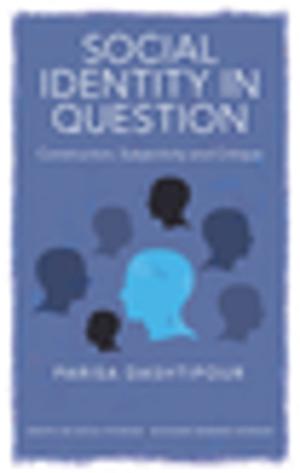Building Communication Theories
A Socio/cultural Approach
Nonfiction, Reference & Language, Language Arts, Communication| Author: | ISBN: | 9781136694899 | |
| Publisher: | Taylor and Francis | Publication: | October 16, 2013 |
| Imprint: | Routledge | Language: | English |
| Author: | |
| ISBN: | 9781136694899 |
| Publisher: | Taylor and Francis |
| Publication: | October 16, 2013 |
| Imprint: | Routledge |
| Language: | English |
Concern with various matters related to humans as they communicate has led to an increase in both research and theorizing during the second half of the 20th century. As a matter of fact, so many scholars and so many disciplines have become involved in this process that it is virtually impossible to understand and appreciate all that has been accomplished so far. This book focuses on one important aspect of human sense-making -- theory building -- and strives to clarify the thesis that theories do not develop in some sort of social, intellectual, or cultural vacuum. They are necessarily the products of specific times, insights, and mindsets. Theories dealing with the process of communication, or communicating, are tied to socio-cultural value systems and historic factors that influence individuals in ways often inadequately understood by those who use them. The process-orientation of this book inevitably leads to an emphasis on the perceptions of human beings. Thus, the focus shifts from the subject or area called "communication" to the act of communicating. Finally, this volume offers insight into how the process of human sense-making has evolved in those academic fields commonly identified as communication, rhetoric, speech communication or speech, within specific socio-cultural settings.
Concern with various matters related to humans as they communicate has led to an increase in both research and theorizing during the second half of the 20th century. As a matter of fact, so many scholars and so many disciplines have become involved in this process that it is virtually impossible to understand and appreciate all that has been accomplished so far. This book focuses on one important aspect of human sense-making -- theory building -- and strives to clarify the thesis that theories do not develop in some sort of social, intellectual, or cultural vacuum. They are necessarily the products of specific times, insights, and mindsets. Theories dealing with the process of communication, or communicating, are tied to socio-cultural value systems and historic factors that influence individuals in ways often inadequately understood by those who use them. The process-orientation of this book inevitably leads to an emphasis on the perceptions of human beings. Thus, the focus shifts from the subject or area called "communication" to the act of communicating. Finally, this volume offers insight into how the process of human sense-making has evolved in those academic fields commonly identified as communication, rhetoric, speech communication or speech, within specific socio-cultural settings.















